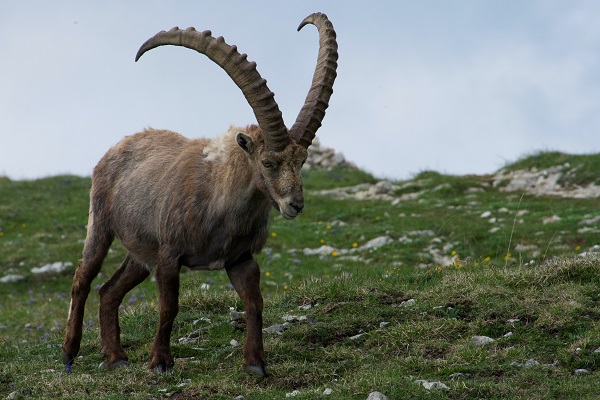
The ibex, a magnificent and resilient mountain-dwelling species, holds a special place in the heart of nature enthusiasts and conservationists alike. With its distinctive curved horns and rugged appearance, the ibex is a symbol of alpine majesty. In this article, we will delve into the fascinating world of the ibex, exploring its native habitat and range, its average size and lifespan, and its crucial role in the environment.
Native Habitat and Range
Ibexes are primarily found in the mountainous regions of Europe and Asia. These remarkable creatures are supremely adapted to the harsh and unforgiving environments of the alpine and subalpine zones. They can be found in countries such as Switzerland, Italy, France, Austria, and Spain in Europe, as well as in parts of Asia, including the Himalayas, the Caucasus Mountains, and the Altai Mountains.
Ibexes have an uncanny ability to navigate treacherous terrains, often found at elevations ranging from 6,000 to 15,000 feet above sea level. Their habitat consists of steep, rocky slopes, cliffs, and alpine meadows. These areas provide them with both sustenance and protection from predators.
Physical Characteristics and Lifespan
One of the most striking features of the ibex is its impressive set of curved horns. These horns are a vital part of the ibex’s physiology and serve several functions. They are used for defense against predators, such as wolves and lynx, and for establishing dominance within their social groups during mating season. The horns can reach lengths of up to 40 inches and are a symbol of the ibex’s strength and resilience.
In terms of size, ibexes are relatively large herbivores, with males (known as bucks) typically larger than females (known as does). On average, male ibexes can weigh between 200 to 300 pounds, while females are generally smaller, weighing between 110 to 160 pounds. Their lifespan in the wild is typically around 10 to 15 years.
Role in the Environment
The ibex plays a crucial role in the ecosystem of its native habitat. As herbivores, they graze on alpine vegetation, including grasses, herbs, and shrubs. Their selective grazing helps to control the growth of plant species, preventing any single type from dominating the ecosystem. This, in turn, promotes biodiversity in alpine meadows and ensures the health of the ecosystem.
Furthermore, ibexes are considered an indicator species, meaning their presence or absence can provide valuable insights into the overall health of an ecosystem. Their ability to thrive in harsh mountain environments reflects the resilience of these ecosystems and the effectiveness of conservation efforts.
Conservation Efforts
Despite their adaptability, ibex populations have faced threats over the years, primarily due to habitat loss and poaching. Conservation organizations and governments have recognized the importance of protecting these iconic mountain-dwellers.
Efforts to conserve ibex populations have included habitat preservation, anti-poaching measures, and population monitoring. Additionally, the establishment of protected areas and national parks has provided safe havens for ibexes to thrive.
Conclusion
The ibex, with its majestic appearance and vital role in alpine ecosystems, is a symbol of strength and endurance in the face of adversity. Its native habitat and range in the mountainous regions of Europe and Asia are testament to its adaptability, and its presence serves as a crucial indicator of ecosystem health.
Related Articles & Free Email Newsletter Sign Up
Desert Bighorn Sheep are Masters of Arid Landscapes
Giant Salamanders are the Largest Amphibians in the World




Comment here